#hanfu_challenge
Explore tagged Tumblr posts
Text
[China History] Bound by Blood, Denied by Law: A History of Women’s Inheritance in China[Eng Sub]
Step into a thousand years of silence.
This is a film about women’s inheritance rights were gradually stripped away during the era of China’s feudal dynasties.
This is not just history. This is herstory.
A narrative long buried under rituals, surnames, and silence — now unearthed.
work by Bao Xian (@宝苋xian)
————————
🧚🏻Production & Actor:@宝苋xian
🔗Douyin:https://v.douyin.com/UtQyMA3ZAyI/ 01/15 Ate:/ [email protected]
————————
#chinese hanfu#herstory#women’s inheritance rights#hanfu#hanfu accessories#hanfu_challenge#china#chinese traditional clothing#china history#woman right#chinese#宝苋xian#imperial china#历史#女性历史#漢服#汉服#中華風
247 notes
·
View notes
Photo
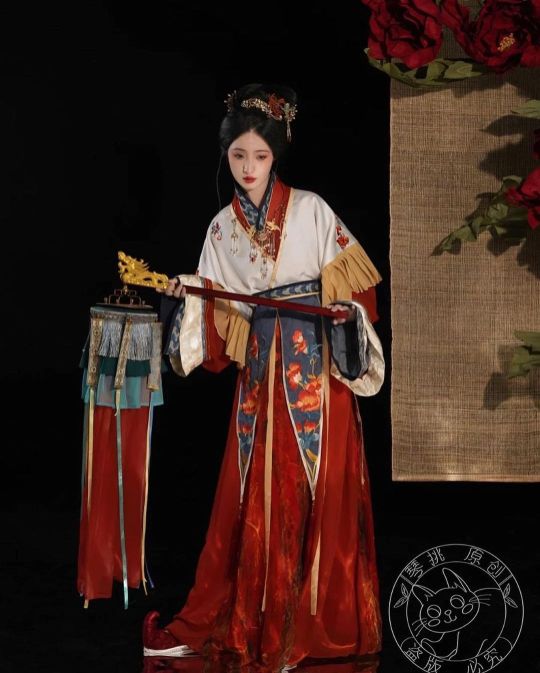
🌺Pomegranate flower goddess. 🌨Patented design: Wei Jin Style Hanfu repost from @琴挑原创汉服 Weibo/Taobao. 🏮The “jellyfish-like” gauze lantern: Jiàng shā dēng is unique Chinese intangible cultural heritage. #hanfu #flowergoddess #hanfugirl #hanfudress #hanfu_challenge #琴挑原创汉服 #hanfuphotography #hanfufashion #hanfufromchina #hanfuculture #chinesedress #weijinstyle #jindynasty #chinesecostume #chinafashion #hanfuhairstyle #hanfuaccessories #chineselantern #lanternchina #绛纱灯 #灯 #silklantern #chinesehair #chinesehairstyle #intangibleculturalheritage #jiangshadeng #gauzelantern #traditionalart #traditionalculture #traditionalclothes https://www.instagram.com/p/Ci-h3lBp-bi/?igshid=NGJjMDIxMWI=
#hanfu#flowergoddess#hanfugirl#hanfudress#hanfu_challenge#琴挑原创汉服#hanfuphotography#hanfufashion#hanfufromchina#hanfuculture#chinesedress#weijinstyle#jindynasty#chinesecostume#chinafashion#hanfuhairstyle#hanfuaccessories#chineselantern#lanternchina#绛纱灯#灯#silklantern#chinesehair#chinesehairstyle#intangibleculturalheritage#jiangshadeng#gauzelantern#traditionalart#traditionalculture#traditionalclothes
89 notes
·
View notes
Text
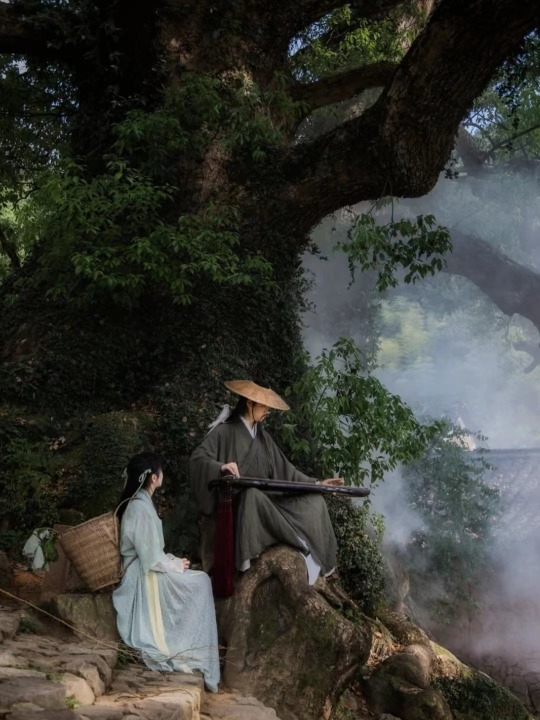
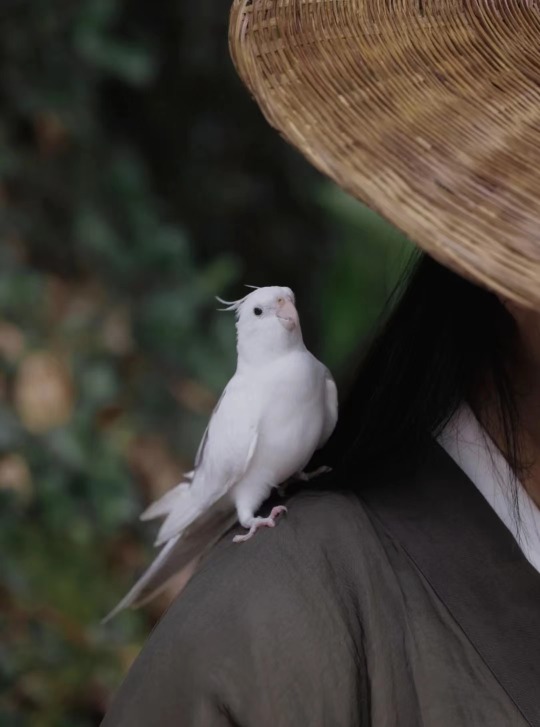
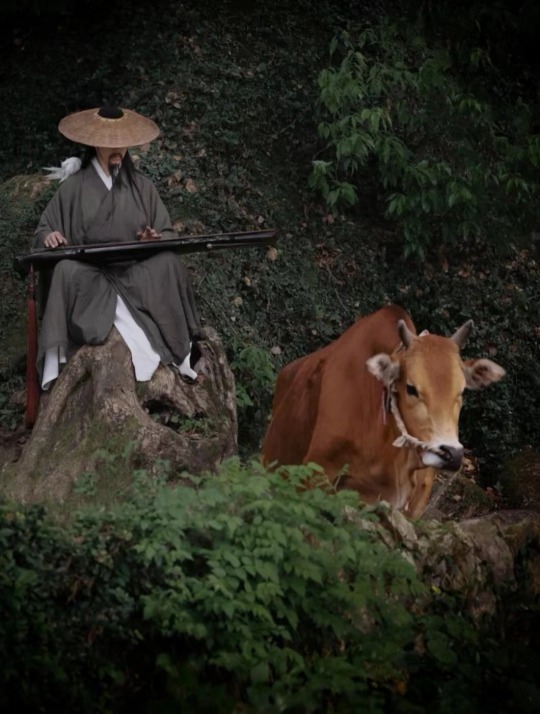
Hermits
#hanfu#chinese costume#asian costumes#chinese hanfu#photoshoot#aesthetic#beautiful#china#fashion#art#photography#chinese#Hanfu#hanfu accessories#hanfu art#hanfu challenge#chineseart#chinesecostume#chineseculture#hanfu_challenge#chinesestyle#汉服#漢服#中華風#hanfu from china#chinese traditional clothing#motivation#nature#martial arts#travel
98 notes
·
View notes
Text
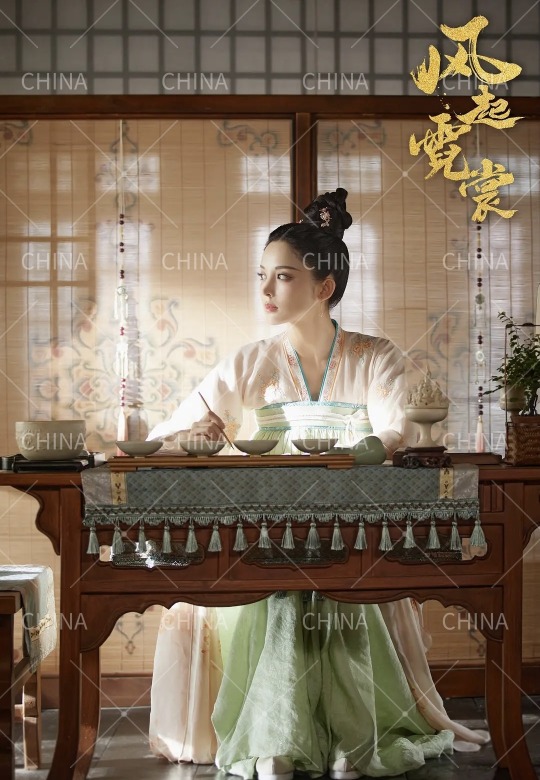
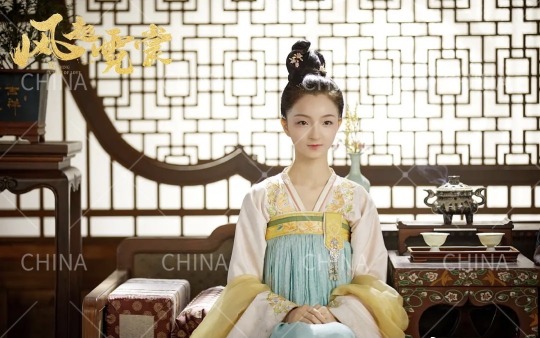
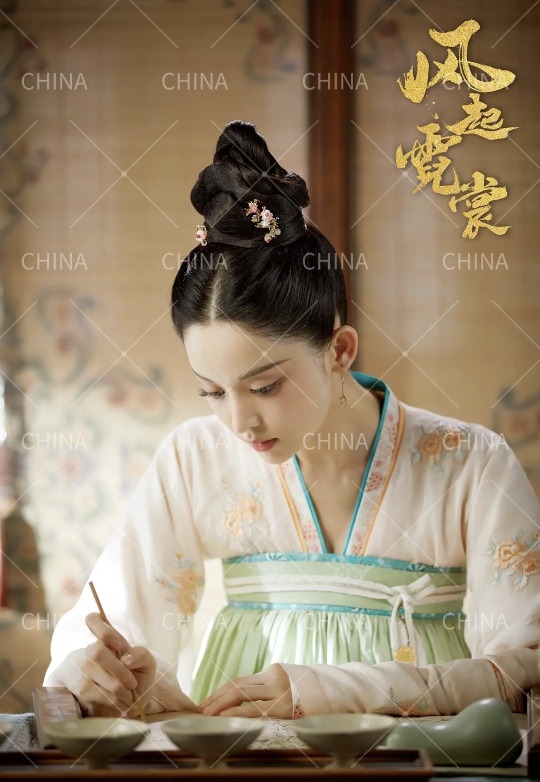
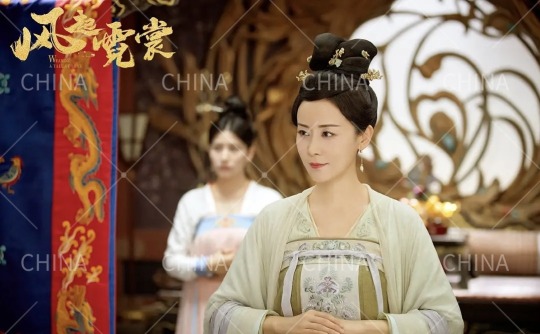
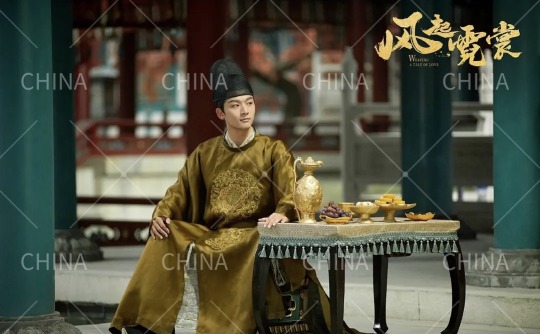
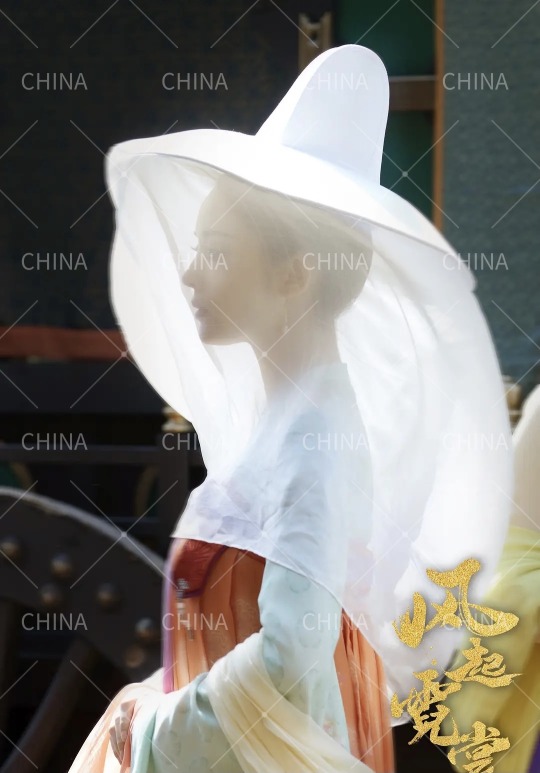
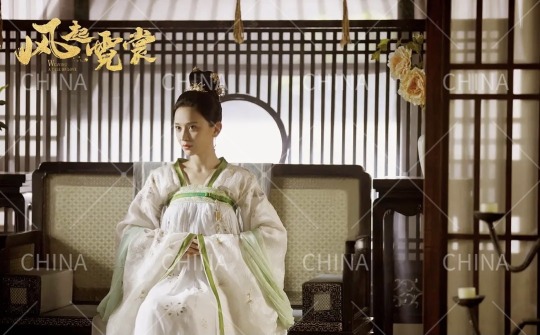
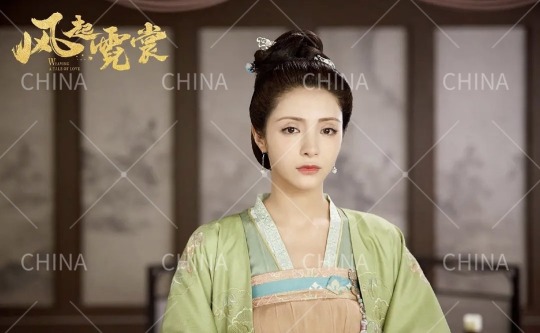
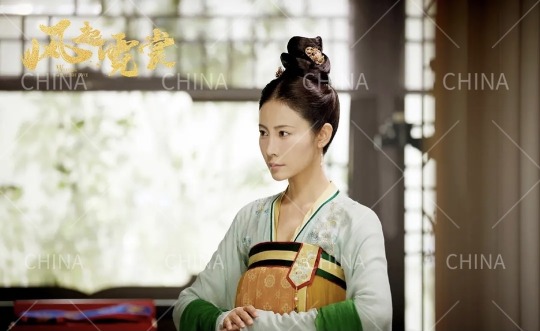
#China#Chinese#hanfu#汉服#漢服#한푸#华服#Chinese_style#中国风#中華風#ChineseCostume#Chinese_culture#hanfu_challenge#漢服チャレンジ#汉服挑战#한푸_도전
4 notes
·
View notes
Photo

liziqi 의 봄날 영상 정말 영상미가 넘쳐요! #liziqi #gaudi2525 #가우디이오이오 http://myrf.kr/Q/?n=10414&i=liziqi&s=insta #李子柒 #liziqi #Youtube #古风 #gufeng #中国 #China #Chinese #ChineseCostume #hanfu #汉服 #漢服 #한푸 #hanfu_challenge #汉服挑战 #漢服チャレンジ #한푸_도전 #ChineseCulture #Chinesefood #ChineseStyle #中国风 #中華風 https://www.instagram.com/p/CNpjdNFnw4D/?igshid=8x3n6leuz1tp
#liziqi#gaudi2525#가우디이오이오#李子柒#youtube#古风#gufeng#中国#china#chinese#chinesecostume#hanfu#汉服#漢服#한푸#hanfu_challenge#汉服挑战#漢服チャレンジ#한푸_도전#chineseculture#chinesefood#chinesestyle#中国风#中華風
0 notes
Text


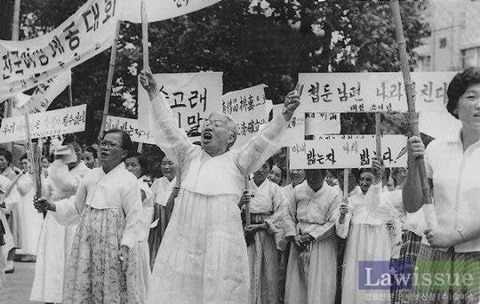
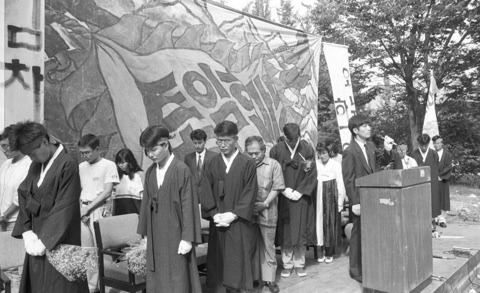
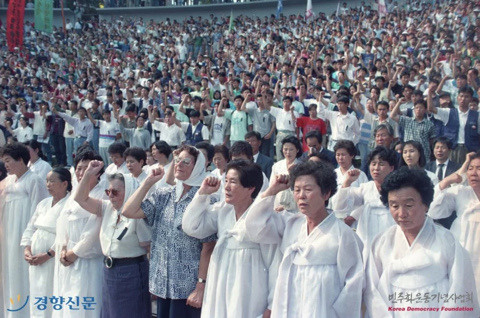
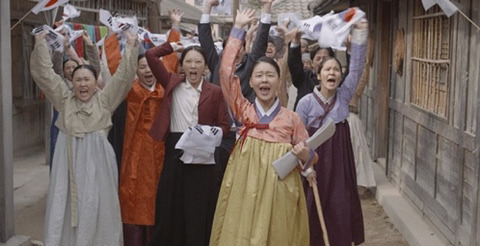
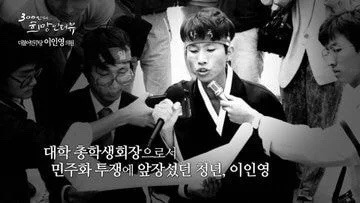
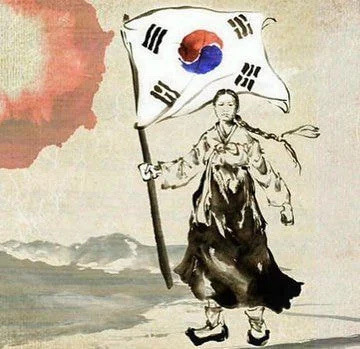
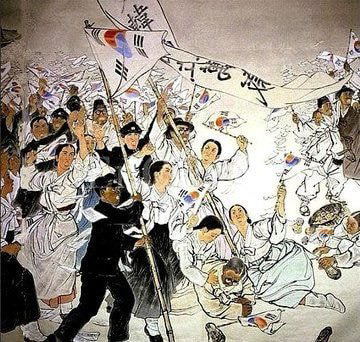
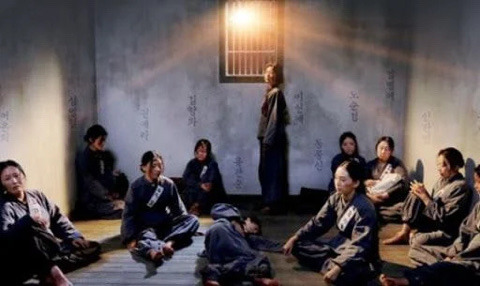
#hanfu_challenge
韩服是民主化运动的象征
我感受到了很多中国人希望用'#한푸도전'来实现民主主义。
支持你们的勇气。
한복은 민주화운동의 상징이다.
#한푸도전 으로 민주주의를 실현하려는
중국인들의 열망을 느꼈다.
너희들의 용기를 지지한다.
#한푸_도전
#汉服挑战
#hanfu_challenge
我们穿着韩服赢得了民主主义。 谢谢你们喜欢韩服,我支持中国的民主化!
우린 한복을 입고 민주주의를 이뤄냈지 한복 좋아해줘서 고맙다, 중국의 민주주의도 응원해
38 notes
·
View notes
Photo

Get access to expert essay writing help and increase your grades with us. Learn from assignments completed by our professional writers. Email: [email protected] WeChat Id: eliteessays001 #sheffielduniversity #sheffieldhallamuniversity #sheffielduniversitymanagementschool #sheffield #sheffieldstudents #sheffieldstudentaccommodation #hanfu #artist #painting #Chinese_style #中国风 #中華風 #China #Chinese_culture #汉服 #ChineseNewYear #Chinese #drawing #art #chinesetiktok #漢服チャレンジ #donghua #LionDance #虎头帽 #ChineseNewYear2021 #hanfu #hanfu_challenge #汉服 #汉服挑战 #漢服 #HappyChineseNewYear (at The University of Sheffield) https://www.instagram.com/p/CK4TZy6ARWt/?igshid=5513nvvmtszo
#sheffielduniversity#sheffieldhallamuniversity#sheffielduniversitymanagementschool#sheffield#sheffieldstudents#sheffieldstudentaccommodation#hanfu#artist#painting#chinese_style#中国风#中華風#china#chinese_culture#汉服#chinesenewyear#chinese#drawing#art#chinesetiktok#漢服チャレンジ#donghua#liondance#虎头帽#chinesenewyear2021#hanfu_challenge#汉服挑战#漢服#happychinesenewyear
0 notes
Text
[Hanfu · 漢服]Chinese Ming Dynasty (1368–1644)Traditional Crown & Hanfu In Cdrama 【雁归时/The Glory】
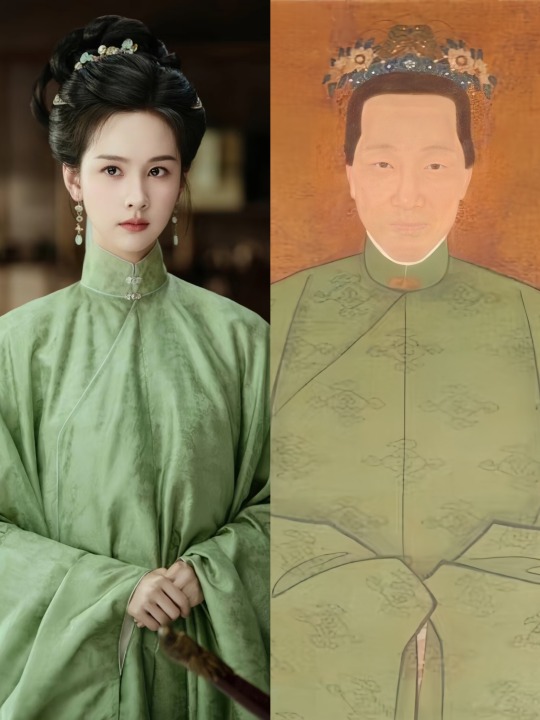

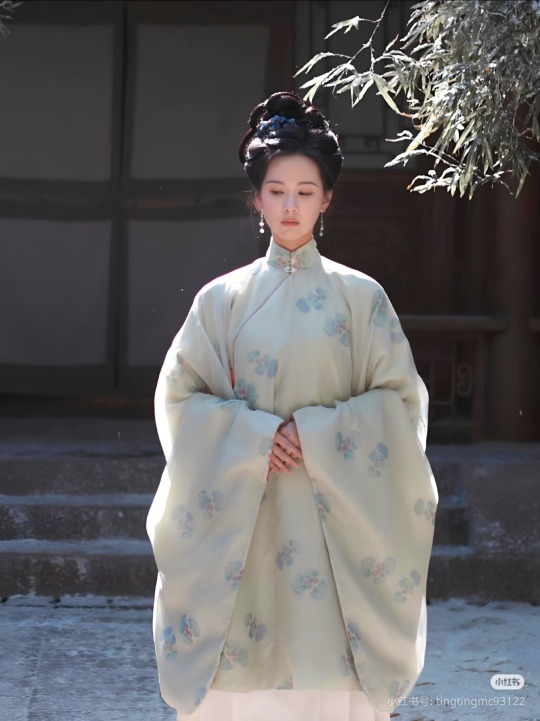
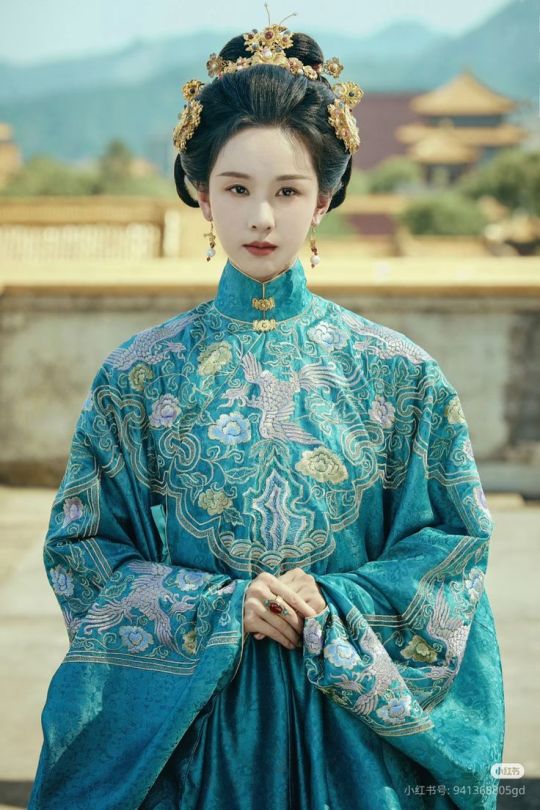
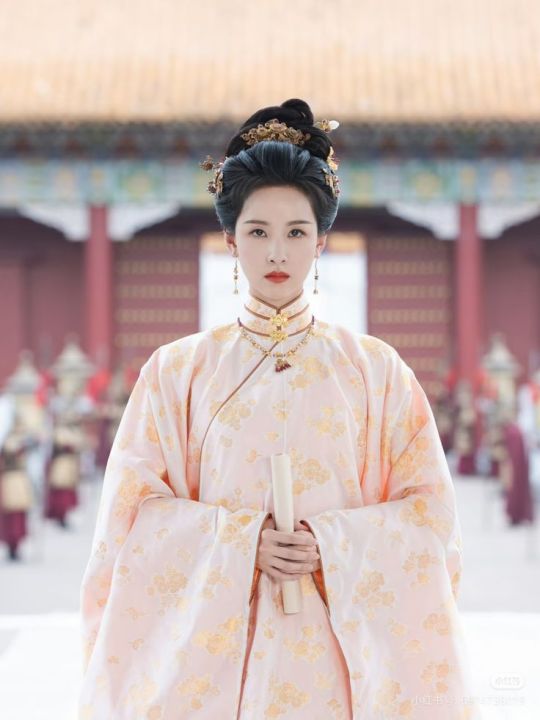
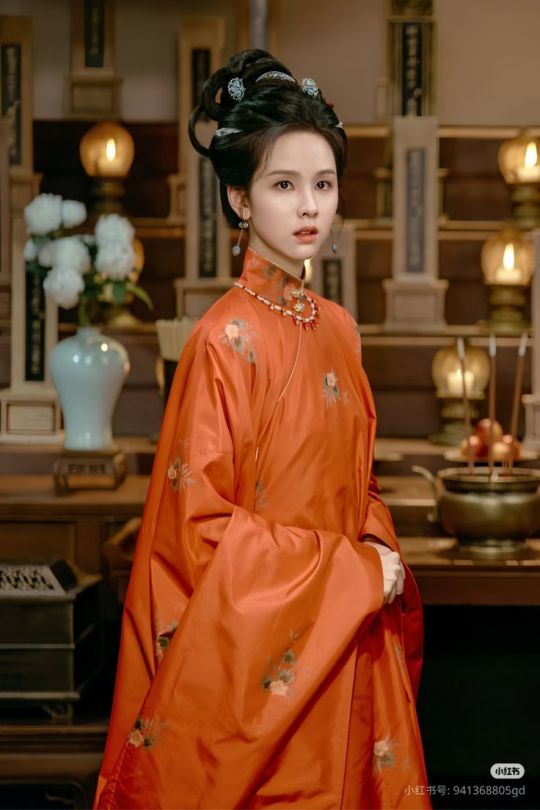

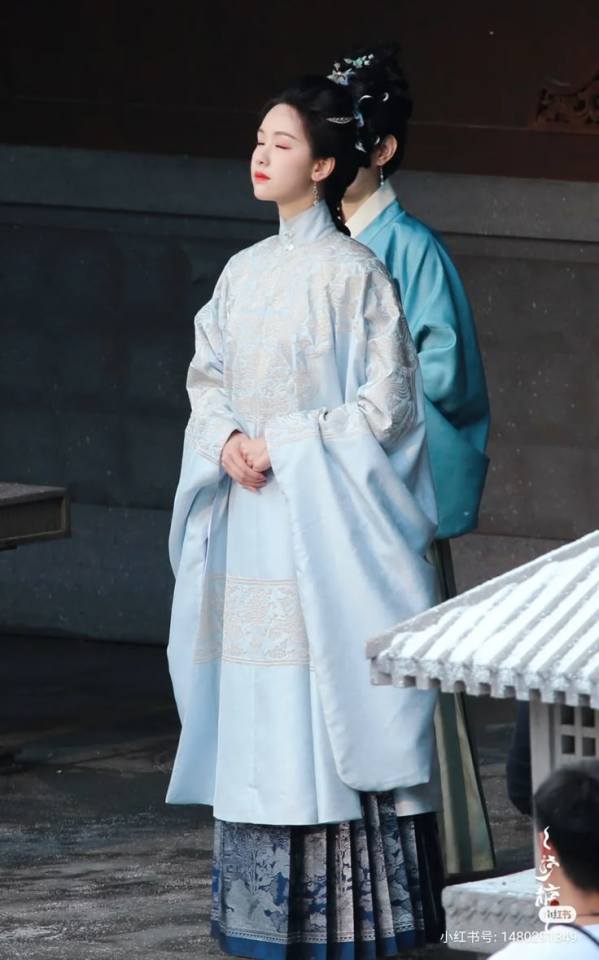

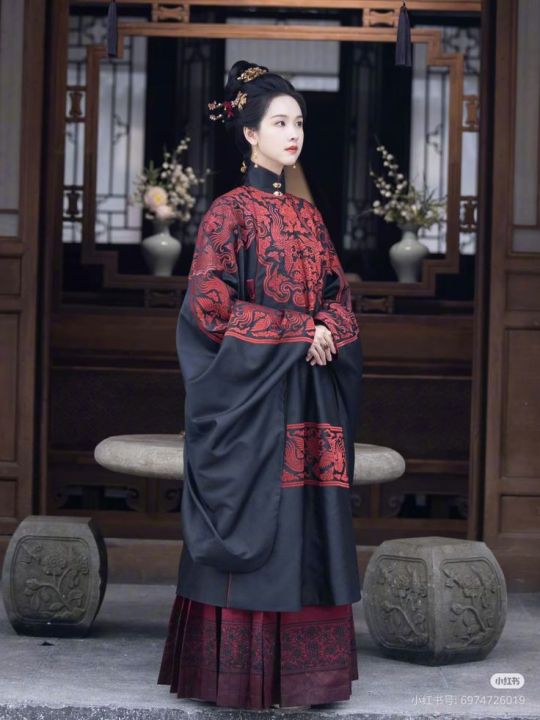



【Historical Artifacts Reference 】:
▶Portraits of Chinese Women from the Late Ming Dynasty




▶China Ming Dynasty Blue Damask Gauze Women's Long Garment – Collection of the Confucius Museum
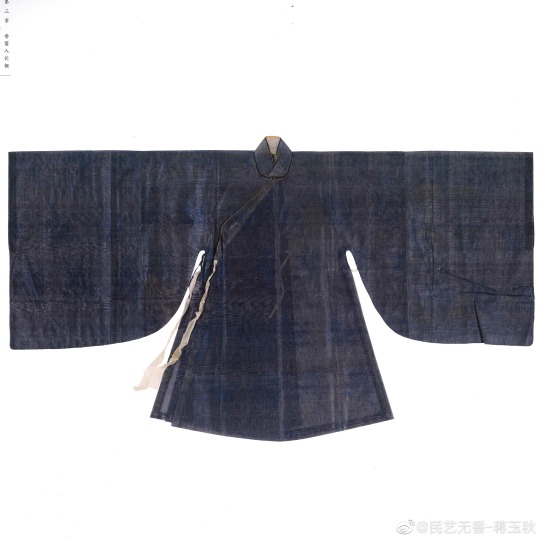
▶China Ming Dynasty White Gauze Long Garment with Subtle Cloud Patterns – Collection of the Confucius Museum
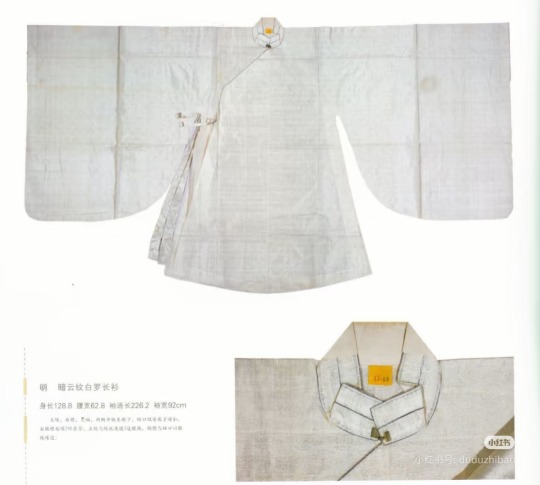
▶Portraits of Chinese Women from the Early Qing Dynasty
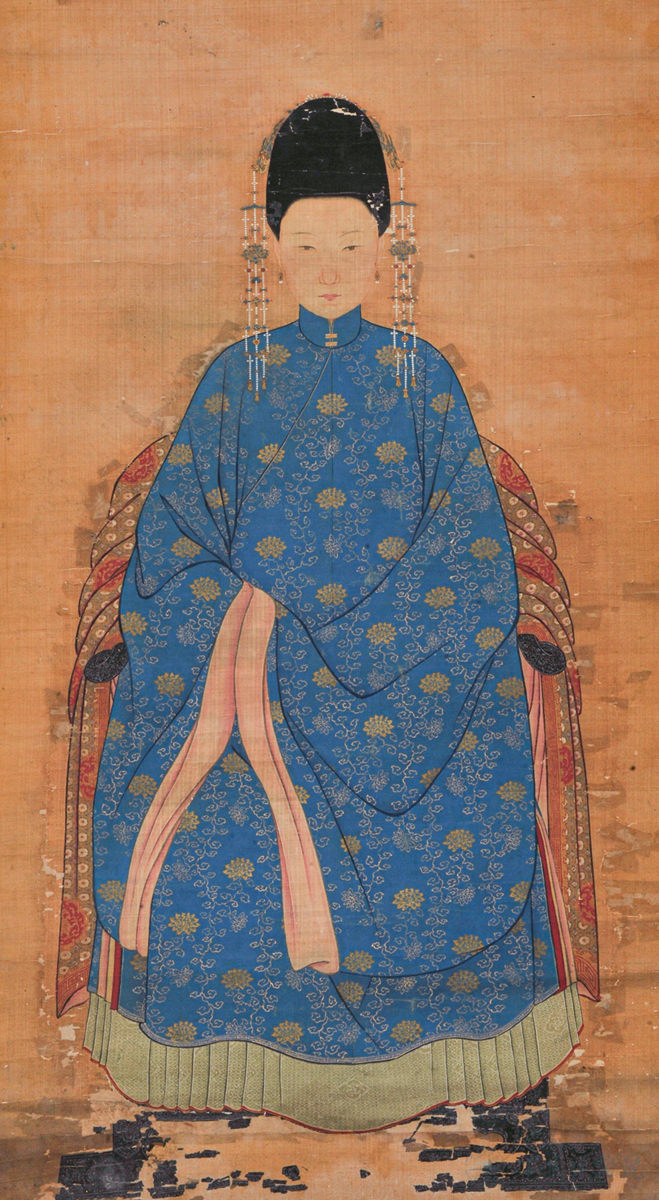

【Types of Hanfu – Stand Collar Long Shan / 竖领长衫 or 立领长衫】
In the late Ming dynasty, the use of the upright collar (竖领, also known as the standing collar) became widespread. This collar style was a distinctive development during the Ming period and was generally used in women’s clothing. Based on both portraits and surviving garments, it appears to have evolved from overlapping (jiaoling) and straight collars with fastened buttons.
The upright collar stood up and wrapped closely around the neck, offering both a refined appearance and added warmth. It was typically secured with one or two pairs of zimu kou (子母扣)—interlocking buttons often made from metal. If these fasteners were crafted from gold, silver, or even gemstones, they served not only a functional purpose but also became focal decorative elements. Placed at the neckline and front opening—where attention naturally falls—these buttons added a touch of brilliance and conveyed status and elegance.
Some scholars suggest that the popularity of this enclosed collar style may also have been influenced by climatic factors. The late Ming period coincided with the onset of the Little Ice Age, prompting a shift from more open collars to styles that provided better insulation against the cold.
The design of the stand collar long shan proved to be enduring. Even after the fall of the Ming dynasty, it continued into the early and mid-Qing period. Its legacy can be seen lingering into the late Qing, especially in stage costumes worn by opera performers, where echoes of the original structure still remained visible.
#chinese hanfu#Ming Dynasty (1368–1644)#hanfu#hanfu accessories#hanfu_challenge#china#chinese traditional clothing#chinese#early qing dynasty#漢服#汉服#中華風#雁归时/The Glory#chinese drama#陈都灵#chen duling#Stand Collar Long Shan#竖领长衫#立领长衫
236 notes
·
View notes
Text
[Hanfu・漢服]Chinese Tang Dynasty(618–907AD) Hanfu Photoshoots By 臨溪摄影 Linseaphoto










A Requiem for a Tang Dynasty Lady — Inspired by the Elegance of the Past
Makeup and styling inspired by: History scholar “Yanwang” Hypothesis & Tang Dynasty female officials’ stone reliefs
🧚♀️Model: @清音音音音
⸻
In the prime of her youth, life was cut short—
Yet the lavish burial ornaments she left behind now whisper of an identity at odds with her tragic end.
The inspiration for this look is drawn from the grandeur of the Tang Dynasty, reimagined through both historical texts and the graceful stone carvings of imperial court women. The intricate crown of Li Chui, the refined silhouette of her attire—each detail tells a story of a noblewoman lost to time.
She may have been born into privilege, yet her fate did not reflect the power her surname once held. In the turbulent backdrop of the Wu Zhou court’s political intrigues, even royal blood could not guarantee protection.
Years passed. Her name faded.
But her burial treasures—long buried—emerged once more, inviting a quiet act of remembrance.
This recreation is more than a visual homage. It is a silent dialogue between present and past. An attempt to offer a belated comfort, a moment of shared empathy across dynasties, for not just one ill-fated princess, but for every woman of the Tang court whose story was never told in full.
May this look be a gentle tribute—
Not only to her elegance, but to her humanity.
For those interested in the historical analysis of Tang dynasty princesses’ hair ornaments, please refer to the post linked below.
————————————
📸Photo:@臨溪摄影 Linseaphoto
🔗Xiaohongshu App:https://www.xiaohongshu.com/user/profile/5a331a154eacab583950324f?xsec_token=YBFGVF7bdbF0sXRZVFipFZ7k_R0w5U4RjtU0iGrTWo0WQ=&xsec_source=app_share&xhsshare=CopyLink&appuid=5c4d826000000000110077bd&apptime=1748077698&share_id=f2413e5acd9f4077b3a06fec90e78ce8
#chinese hanfu#tang dynasty#hanfu#hanfu accessories#hanfu_challenge#china#chinese traditional clothing#chinese#臨溪摄影 Linseaphoto#清音音音音
184 notes
·
View notes
Text
[Hanfu · 漢服]Chinese Tang Dynasty (618–907AD) Traditional Clothing Hanfu Based On Tang Dynasty Dunhuang Mural















【Historical Reference Artifacts】:
China Tang Dynasty Dunhuang Mural《Donor in Cave 9 of Dunhuang Mogao Grottoes/莫高窟第9窟供养人像 》


————————
📸Photo:@佳期阁
🧚🏻Model :Owner of 佳期阁
👗Hanfu: @佳期阁
🔗Weibo:https://weibo.com/6614078088/OFh3sakl9?pagetype=profilefeed
————————
#chinese hanfu#Tang Dynasty#hanfu#hanfu accessories#hanfu_challenge#chinese traditional clothing#china#chinese#Donor in Cave 9 of Dunhuang Mogao Grottoes/莫高窟第9窟供养人像#佳期阁#漢服#汉服#中華風#chinese historical fashion#chinese historical hairstyle
300 notes
·
View notes
Text
[Hanfu · 漢服]Chinese Tang Dynasty(618–907AD)Traditional Clothing Hanfu Based On Female Dancer figurines of Tang Dynasty











【Historical Artifacts Reference 】:
▶Set of China Tang Dynasty“Tang Sancai" Figurines of Musicians and Dancers<鳥歌萬歲樂>・Wuzetian Period
Shaanxi Tang Sancai Art Museum Collection




In the Tang Dynasty, women who usually wore bird crowns were mostly dancers, and the bird was often in the shape of a peacock or a parrot.
The historical records mention the bird crown worn by women during the Tang Dynasty several times. For instance, in Du You's Tongdian (Volume 6, "Music Section," regarding the "Sitting and Standing Performers"/《通典》乐六“坐立部伎), it is recorded: "The Guangsheng music(光圣乐) was created by Emperor Xuanzong. The dancers, eighty in number, wore bird crowns and multicolored painted robes. They were dressed in the style of the Upper Yuan and Shenshou festivals, to sing of the emperor's achievements." Similar records are found in Xin Tang Shu /《新唐书》(Volume 22) and Taiping Yulan by Song Li Fang: "When Emperor Zhongzong ascended the throne, he created the Longchi music/龙池乐, with twelve dancers, wearing lotus crowns and stepping on special shoes, performing with elegant music, though without bells. He also created the 'Shenshou music/《圣寿乐》,' in which the female dancers wore five-colored embroidered robes and performed.
Additionally, he created the 'Xiao Po Zhen music/《小破阵乐》,' with dancers dressed in armor. Lastly, the 'Guangsheng music/《光圣乐》' had dancers wearing bird crowns and painted robes, to sing of the emperor's accomplishments."
Taiping Yulan (Volume 568, Music Section 6) records: "Empress Wu had the 'Bird Song for Ten Thousand Years' music composed during a grand banquet in the Eastern Xiangluan Hall of the palace. At that time, birds capable of speaking were kept in the palace, and they often repeated 'Ten Thousand Years.' This music was created to symbolize this. There were three dancers, with large red sleeves, adorned with painted birds resembling the 'quail-like bird' (quyu). In present-day Lingnan, there are birds similar to the quail that, when raised for a long time, can speak, and they are called 'Jilie'/《鸡烈》."
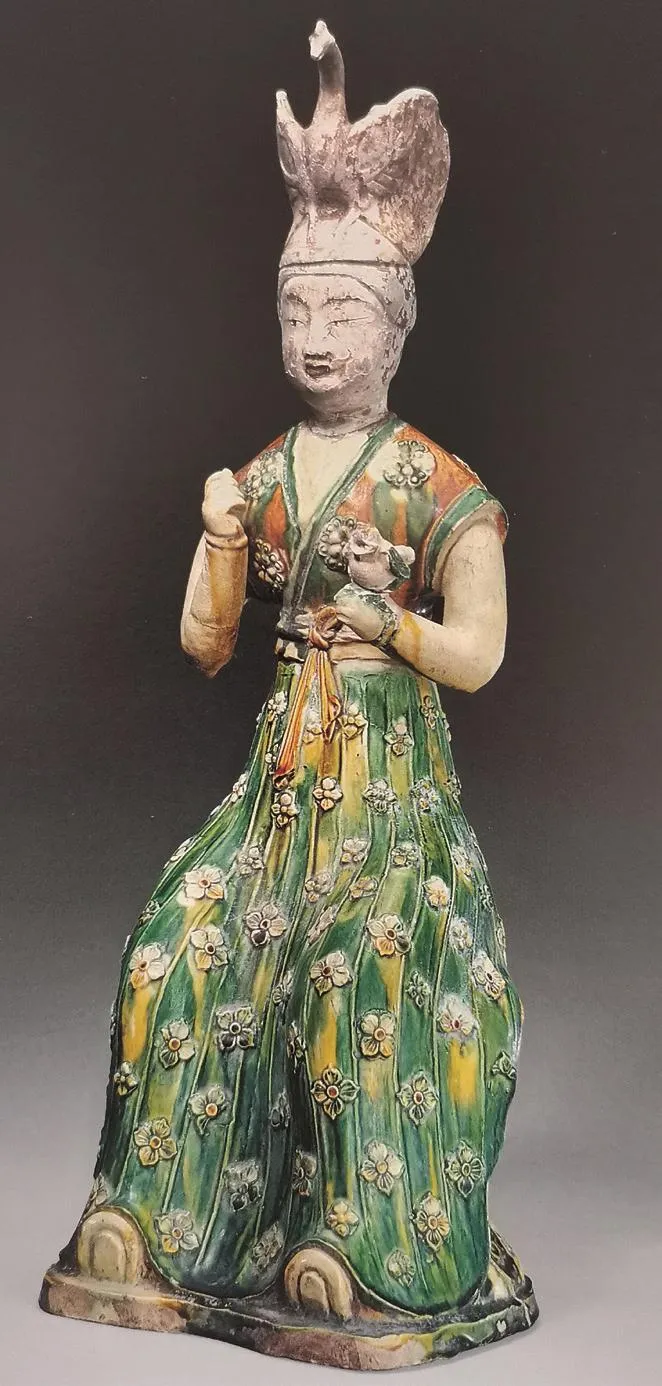
Tang Dynasty Sancai female seated figurine from the Palace Museum
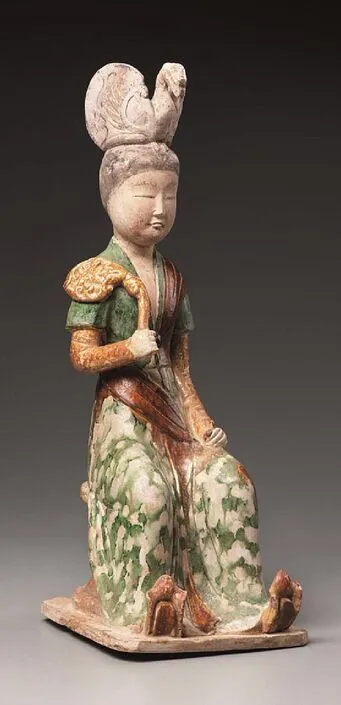
The Boston Museum of Fine Arts houses a Tang Dynasty Sancai female seated figurine
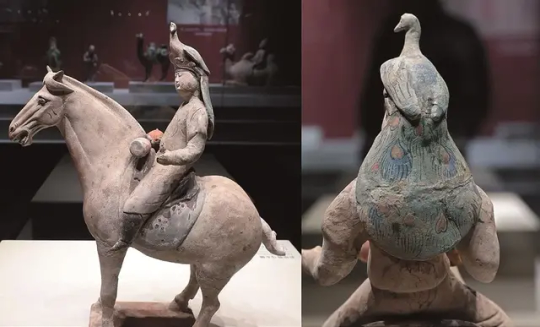
Tang Dynasty Female figurine of a horse-riding musician unearthed from the tomb of the county lord of Jinxiang
————————
📸Photo:@摄影师 韩超(拍摄 器材)
💄Makeup∶@古卷
🔗Weibo:http://xhslink.com/a/Bs9rgdSfq8a7
————————
#chinese hanfu#Tang Dynasty(618–907AD)#hanfu#hanfu accessories#hanfu_challenge#chinese traditional clothing#china#chinese#Bird crown#Dancer#Chinese Aesthetics#漢服#汉服#中華風#古卷
216 notes
·
View notes
Text
[Hanfu · 漢服]Chinese Tang Dynasty(618–907AD)Traditional Crown & Hanfu In Cdrama 【国色芳华/Flourished Peony】
♦ 𝗖𝗵𝗶𝗻𝗲𝘀𝗲 𝗔𝗰𝘁𝗼𝗿: 𝗭𝗵𝗮𝗻𝗴 𝗬𝗮𝗾𝗶𝗻/张雅钦 as Li Youzhen (李幼贞) “县主/County Princess/Lord”




【Historical Artifacts Reference 】:
▶The crown and hair ornaments unearthed from the tomb of Li Chui,/李倕, a fifth-generation granddaughter of Emperor Gaozu of Tang China




2.Gold necklace inlaid with pearls and gemstones, Late Sui Dynasty
Excavated in 1957 from the tomb of Li Jingxun, Xi'an, Shaanxi,China.

"Flourished Peony" (《国色芳华》) is a really cool Chinese drama that dives deep into the Tang Dynasty. It takes a close look at the fashion, makeup, and etiquette of that time. The show’s team did a ton of research, to restore Tang Dynasty artifacts to get the hanfu and makeup just right. You can really see the effort they put into making everything look authentic and true to the era.
If you're into Tang Dynasty Hanfu,Makeup , or the whole vibe of that period, I highly recommend watching this drama. It's a great way to get a glimpse of ancient Chinese culture through a really well-done romantic drama. ---------------
【Debate on the Interpretation and Wearing of the Li Chui Tomb Crown Ornaments】
The crown ornaments unearthed from the tomb of Li Chui (李倕) are still a topic of debate due to the fact that the pieces were found scattered, making the exact method of wearing unclear. The version currently displayed in the museum is a reconstruction based on the collaborative efforts of Chinese and German experts. However, some scholars in China have a different view, arguing that this ornament may not necessarily be a "crown."
Fwe can refer to the perspective of the author(@左丘萌) of Chinese Beauty and Adornments: The Tang Dynasty Daughters (《中国妆束:大唐女儿行》), who offers an alternative interpretation of how this crown ornament was likely worn(If anyone are interested, you can save the picture and translate it through the translator)
the right is the author (@左丘萌)'s restoration result and analysis process of the relics:





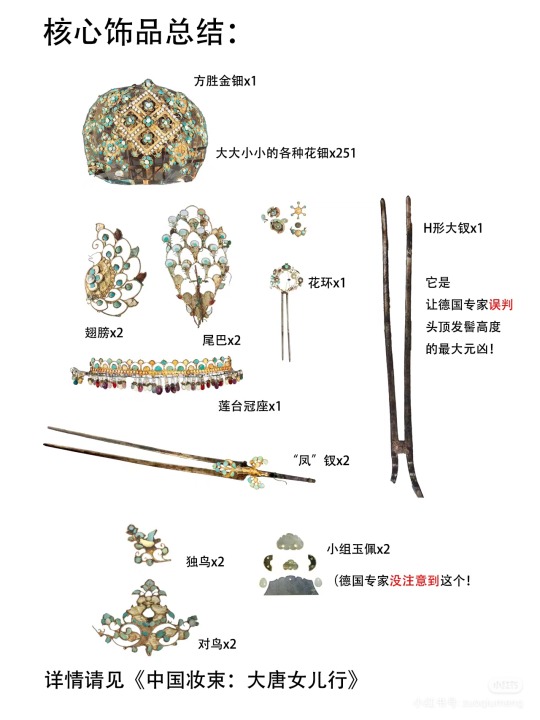




————————
📸Photo:Chinese Drama 【国色芳华/Flourished Peony】
🔗Crown analysis image source: http://xhslink.com/a/aJdFM1q0QIe8
————————
#chinese hanfu#Tang Dynasty(618–907AD)#crown ornaments#Li Chui#李倕#chinese drama#国色芳华/Flourished Peony#hanfu#hanfu accessories#hanfu_challenge#china#chinese traditional clothing#chinese
189 notes
·
View notes
Text
[Hanfu · 漢服]Chinese Tang Dynasty (618–907AD) Dancer Traditional Clothing Hanfu Based On Tang Dynasty Murals








▶1.China Tang Dynasty Mural painting of two women dancing in the tomb of Concubine Yan De /唐代燕德妃墓二女对舞壁画
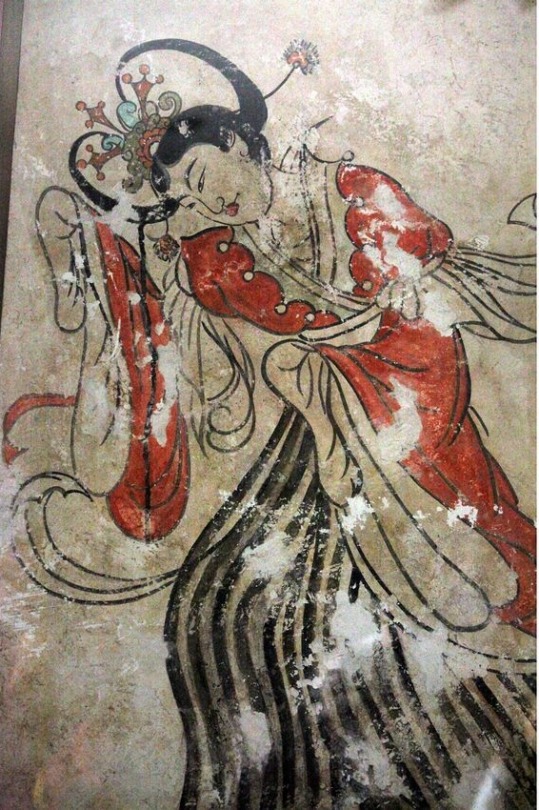

__________________
🧚🏻♀️Model:@盥薇(破防版)
👗Hanfu:@青泠谷
🔗Weibo:https://weibo.com/6969147663/5106836560415760
__________________
#chinese hanfu#hanfu#Tang Dynasty (618–907AD)#hanfu accessories#hanfu_challenge#china#chinese traditional clothing#chinese#Dancer Hanfu#青泠谷#盥薇
257 notes
·
View notes
Text
[Hanfu · 漢服]China Ming Dynasty (1368–1644) Chinese Traditional Clothing Hanfu & Mamian qun/Horse face skirt
Which one is your favorite 💖?

















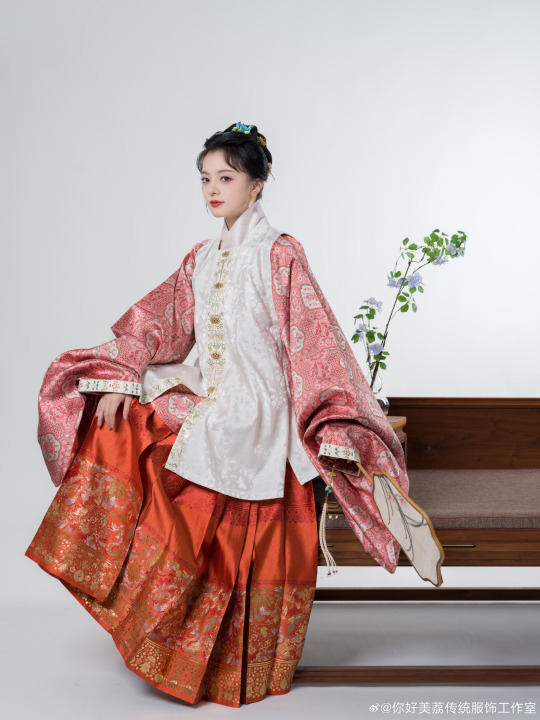


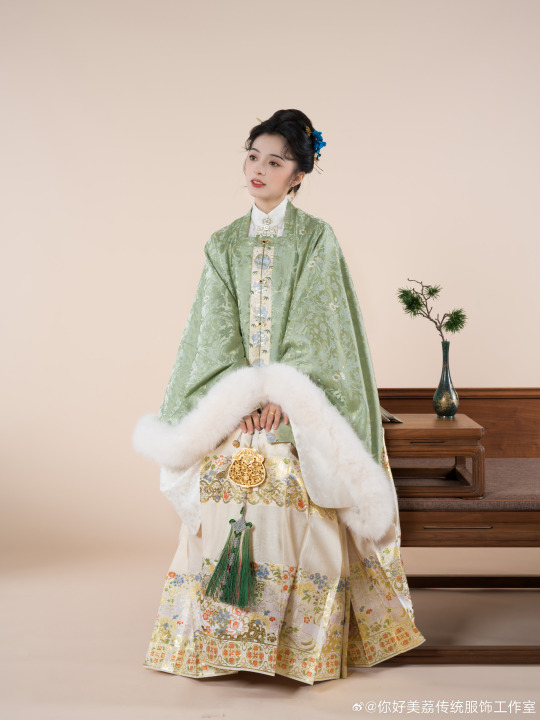









______
📸Photo:@你好美荔传统服饰工作室
👗Hanfu: @你好美荔传统服饰工作室
🧚🏻 Model :@阿时Ashi_
🔗Weibo:https://weibo.com/u/5698195062
_______
#chinese hanfu#Ming Dynasty (1368–1644)#hanfu#hanfu accessories#hanfu_challenge#china#chinese traditional clothing#chinese#漢服#汉服#中華風#hanfu girl#mamianqun#你好美荔传统服饰工作室#chinese style#chinese fashion#history#chinese art#chinese history#ancient china#Hanfu posture reference
170 notes
·
View notes
Text
[Hanfu · 漢服] China Five Dynasties And Ten Kingdoms Period--Min Kingdom (闽国) Traditional Clothing Hanfu Photoshoots









【Historical Artifacts Reference 】:
Based On Five Dynasties and Ten Kingdoms Period: Female Figures from the Tomb of the Empress of Min Kingdom (闽国)


🌸 Four-Butterfly Silver Hairpin (Buyao)

Unearthed from the Tomb of Lady Tang, Southern Tang, Five Dynasties Period
This exquisite silver hair ornament was excavated from the Tomb of Lady Tang located in Daxinggong, Nanjing, Jiangsu Province, dating back to the 10th century CE, during the Southern Tang regime of the Five Dynasties and Ten Kingdoms period.The butterfly ornaments are suspended by fine silver chains, swaying as the wearer walks—hence the name “buyao” (步摇, literally "step-shake")
🌸 Gold-Inlaid Jade Hairpin (Buyao)

Unearthed from the Tomb of Lady Tang, Southern Tang, Five Dynasties Period
This elegant gold-inlaid jade hair ornament was unearthed from the tomb of Lady Tang in Daxinggong, Nanjing, Jiangsu Province, dating to the Southern Tang state (10th century CE) during the Five Dynasties and Ten Kingdoms period.
Court Ladies Wearing Flowered Headdresses (《簪花仕女图》)
Although the Court Ladies Wearing Flowered Headdresses (《簪花仕女图》) is often mistakenly attributed to the Tang dynasty, art historical evidence indicates it was actually created during the late Tang to Five Dynasties and Ten Kingdoms period (9th–10th century CE).
The painting’s stylistic elements—such as the full-faced court ladies, elaborate hairstyles, floral hairpins (zanhua), and luxurious clothing—align closely with depictions of Southern aristocratic women in the Five Dynasties period, particularly those seen in Southern Tang tomb artifacts. These features reflect the refined elegance and cultural taste of that transitional era, rather than the earlier Tang high period.





🖼️Auction items suspected to be paintings from the Five Dynasties period


Although sometimes associated with Ming dynasty art, many Chinese scholars believe this painting better reflects the style of the Five Dynasties and Ten Kingdoms period. The figure’s proportions, attire, and Daoist elements resemble those seen in late Tang to Southern Tang artworks.
However, the painting’s exact date remains uncertain, and there is ongoing debate due to inconsistent seals and mixed stylistic features.
------------------
Photo :@大喵来了
Model:@是小芥末w
Stylist:@赵常月
Xiaohongshu app:https://www.xiaohongshu.com/discovery/item/6834368f00000000230013dc?
------------------
#chinese hanfu#five dynasties and ten kingdoms period#hanfu#hanfu accessories#hanfu_challenge#china#chinese traditional clothing#chinese#五代十国#AncientFashionStudy#HanfuHistory#簪花仕女图#中国传统服饰
100 notes
·
View notes
Text
[Hanfu · 漢服]Chinese Ming Dynasty (1368–1644)Traditional Crown & Hanfu In Cdrama 【藏海传/The Legend of Zang Hai】

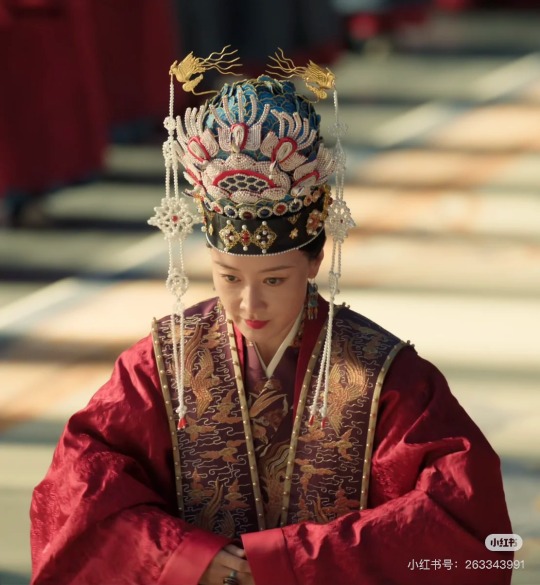

【Historical Artifacts Reference 】:
🔶𝗖𝗵𝗶𝗻𝗲𝘀𝗲 𝗠𝗶𝗻𝗴 𝗗𝘆𝗻𝗮𝘀𝘁𝘆 𝗣𝗼𝗿𝘁𝗿𝗮𝗶𝘁: 𝗣𝗼𝗿𝘁𝗿𝗮𝗶𝘁 𝗼𝗳 𝗟𝗶 𝗬𝗶𝗻𝗴‘𝘀 𝘄𝗶𝗳𝗲 𝗫𝘂 𝗫𝗶𝘂 李璿妻许秀画像 |National Museum of China Collection

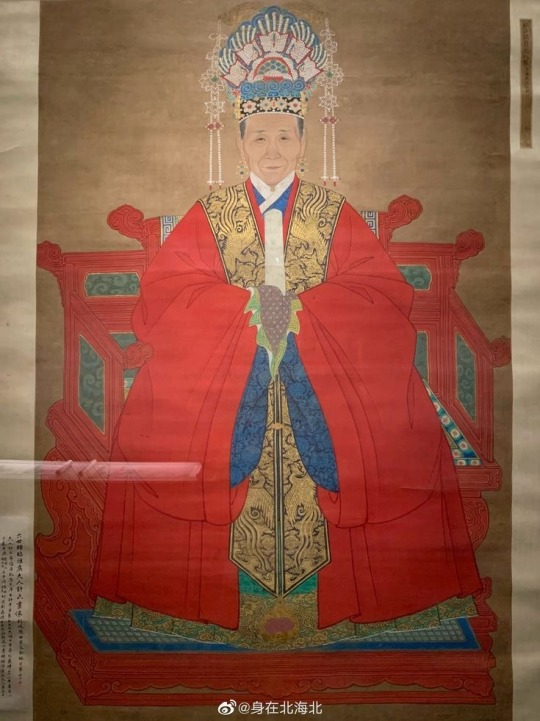
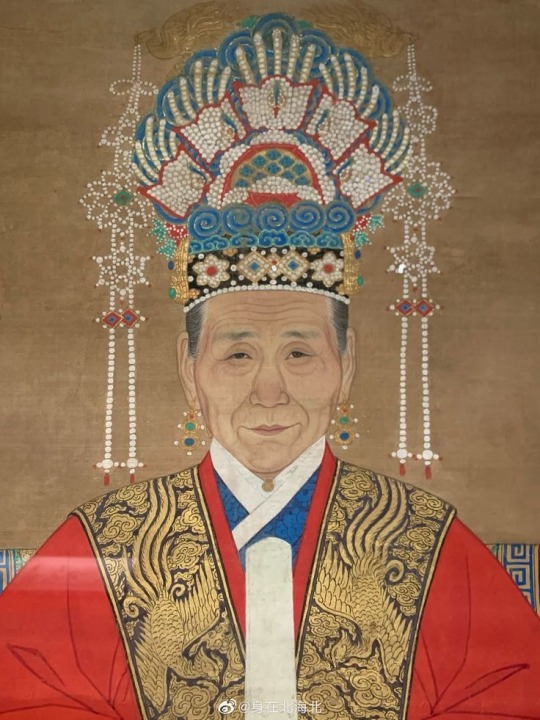
Noble Elegance: The Attire of a Ming Dynasty Lady of Rank
In imperial Ming Dynasty China, a "Gaoming Furen" (诰命夫人)—a titled lady granted honors by the court—was a figure of dignity and authority. Her attire reflected her noble standing, with garments and accessories that clearly distinguished her from commoners. Whether entering the palace or walking among the people, her presence was unmistakable. Here’s a breakdown of her formal ensemble:
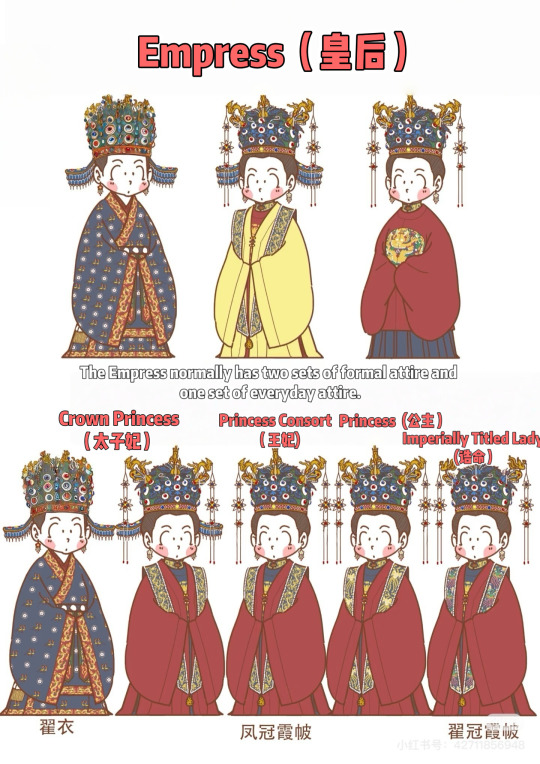
👑 Diguān (翟冠) – Pheasant Crown A unique crown reserved for noblewomen below the rank of empress, decorated with “Di” birds—long-tailed pheasants resembling phoenixes. These birds symbolized high status, second only to the phoenix. The number of pheasants and gold ornaments indicated rank:
Dukes’ and top-grade ladies: 5 pearl pheasants + 2 gold pheasants holding pearl tassels
2nd–4th rank: 4 pearl pheasants + 2 gold pheasants
5th–6th rank: 3 pearl pheasants + 2 silver-gilded gold pheasants
7th–9th rank: 2 pearl pheasants + 2 silver-gilded gold pheasants
👘 Xiapèi (霞帔) – Regal Cape Known also as "xiāpī" or "pī bó," this evolved from a shawl-like drape into a vest-like garment by the Qing dynasty. Originally worn by imperial concubines, it became a status symbol for titled women. Embroidered with birds like pheasants, peacocks, or mandarin ducks, the center panel—bǔzi—featured motifs based on the husband’s or son’s official rank. Only military wives or mothers used bird, not beast, patterns.
💎 Zhuìzi (坠子) – Pendant Tassels More than just a way to fix the xiapèi in place, these ornate pendants became a ritualistic emblem of rank. Often crafted from gold, silver, or jade, they took shapes like hearts, circles, hexagons, or horseshoes. Birds and floral motifs dominated, with phoenixes appearing in the tombs of princesses and duchesses. Placement varied—from the lower end of the xiapèi in Song and Yuan, to multiple positions on the garment in the Ming.
🪶 Other Elements:
Yuanlingpao (圆领袍): Round-collar robe worn underneath
Hongdashan (红大衫): A large red outercoat
Gédài (革带): A formal belt
Xiangfu (象笏): An ivory tablet held during court ceremonies
This opulent layering was not just fashion—it was a visual hierarchy of power, virtue, and dynasty-defined identity. Imagine carrying the entire weight of the empire's order and honor on your shoulders… in silk, feathers, and gold.
#chinese hanfu#hanfu#Ming Dynasty (1368–1644)#hanfu accessories#hanfu_challenge#china#chinese traditional clothing#chinese#“Gaoming Furen” (诰命夫人)#ChineseHistory#HistoricalAesthetics#TraditionalWear#ImperialChina#藏海传#The Legend of Zang Hai
137 notes
·
View notes